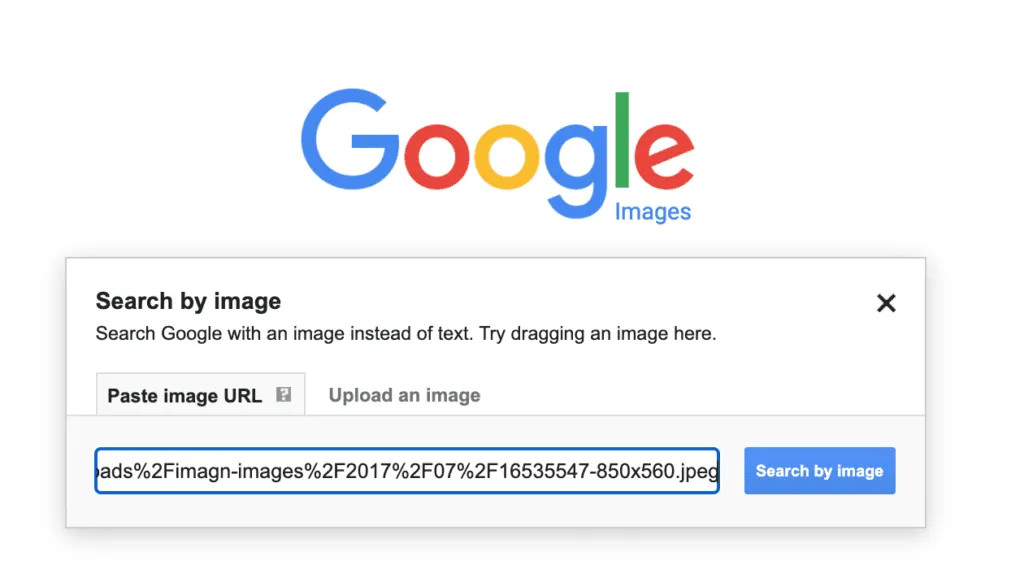Navigating the world of online content creation often involves using images, but it’s crucial to understand the legal implications of using photos you find on the internet. Copyright infringement can lead to significant penalties, ranging from hundreds to thousands of dollars per image. As a content creator, especially for platforms like dfphoto.net, knowing How Can You Tell If A Photo Is Copyrighted is not just good practice—it’s essential for avoiding legal trouble and respecting creators’ rights.
Before you incorporate any image into your website or content, assuming it’s copyrighted is the safest approach. Getting into the habit of verifying image usage rights and seeking permission can save you from potential legal headaches. This guide will walk you through several methods to determine if a photo is copyrighted, helping you use images legally and ethically.
1. Examine the Image for a Watermark
One of the most straightforward ways to identify a copyrighted image is by looking for a watermark. A watermark is typically a logo, text, or signature overlaid on an image to indicate ownership and deter unauthorized use.
Watermarks are a clear signal of copyright protection, and tampering with or removing them is a serious violation. Often, watermarks include the name of the photographer or the company that owns the image rights, making it easy to identify the copyright holder.
 Watermark on a photo indicating copyright ownership
Watermark on a photo indicating copyright ownership
Removing a watermark using photo editing software like Photoshop is ill-advised and can be used as evidence against you in a copyright infringement lawsuit, demonstrating willful violation. Instead, if you intend to use a watermarked image, take the time to contact the creator or owner identified in the watermark and request permission. Many creators are willing to grant permission for image use, provided they receive proper credit. Remember, respecting artists and their work is paramount.
2. Check for Photo Credits in Captions
Captions are often added to images to provide context, but they can also be a key indicator of copyright information. Always look for a caption when you find an image you wish to use. In many cases, a caption will include a photo credit, identifying the photographer or source of the image.
 Watermark on a photo indicating copyright ownership
Watermark on a photo indicating copyright ownership
Look for phrases such as “Photo Credit,” “Credit:”, or “Image Courtesy of” followed by a name. This name could be the photographer, a media organization, or an institution. Once you have this information, you can search online for the photographer or organization and contact them to ask for permission to use the image.
Sometimes, especially with images from television broadcasts, the credit might include a station’s callsign, like “KTVI-TV,” instead of a specific photographer’s name. In such cases, you would need to contact the TV station directly to inquire about image usage rights. Recognizing photo credits in captions is a simple yet effective step in determining image copyright.
3. Investigate Image Metadata
Metadata, or data embedded within the image file, can contain a wealth of information about the image, including copyright details. This information is often used by search engines to understand the image’s content and relevance, but it’s also valuable for identifying copyright ownership.
Photo metadata standards can include descriptive information like headlines and keywords, as well as crucial rights and copyright information. By examining an image’s metadata, you may find the creator’s name, copyright notices, and property rights information, which are essential for seeking licensing rights.
Here’s how to access metadata on different operating systems:
- Windows: Right-click on the image file, select “Properties,” and go to the “Details” tab. This will show you various metadata fields, including copyright information.
- macOS: Open the image in Preview, click “Tools” in the menu bar, then “Show Inspector.” Click the ⓘ icon and then the “EXIF” or “IPTC” tabs to view copyright and ownership details.
Checking metadata is a more technical but often fruitful method to find out how can you tell if a photo is copyrighted and who to contact for permissions.
4. Perform a Reverse Image Search on Google
If you’ve tried checking for watermarks, captions, and metadata but are still unsure about an image’s copyright status, a reverse image search is a powerful tool. Google Reverse Image Search allows you to upload an image or paste an image URL, and it will find visually similar images online, often revealing the original source and copyright information.
 Using Google Reverse Image Search to check image copyright
Using Google Reverse Image Search to check image copyright
Here’s how to use Google Reverse Image Search to investigate image copyright:
- Go to Google Images.
- Click the camera icon in the search bar.
- Paste the image URL or upload the image file.
- Click “Search by image.”
 Steps to perform a reverse image search on Google
Steps to perform a reverse image search on Google
The results can lead you to websites where the image is legally hosted, often with copyright information or licensing details. This method is particularly helpful when you find an image without any explicit copyright notice directly attached to it. By tracing the image back to its source, you can often find the owner and the terms of use.
5. Search the U.S. Copyright Database
For a more official approach, you can search the U.S. Copyright Office’s Public Catalog. This database contains records of registered copyrights in the United States. To use this database effectively, you ideally need to know either the photographer’s name or the image title.
Navigate to the Public Catalog and enter the known information into the search box. If the photographer has registered the image with the Copyright Office, you will find a record of it here.
However, it’s vital to remember that not all copyrighted images are registered. Copyright protection is automatically granted to original works from the moment of creation. Therefore, even if an image is not listed in the Copyright Database, it can still be copyrighted and protected under law. Registration provides additional legal benefits to the copyright holder but is not a prerequisite for copyright protection.
When Permission Isn’t Always Necessary: Fair Use and Public Domain
While it’s always best to seek permission, there are specific circumstances where you might not need to obtain direct consent from the copyright holder. These include fair use and public domain.
Fair Use: The fair use doctrine allows for the limited use of copyrighted material without permission for purposes such as criticism, commentary, news reporting, teaching, scholarship, and research. Determining fair use can be complex and depends on factors like the purpose and character of use, the nature of the copyrighted work, the amount and substantiality of the portion used, and the effect of the use upon the potential market for the copyrighted work.
Public Domain: Works in the public domain are not protected by copyright law and are free for anyone to use without permission. This typically includes works with expired copyrights or works explicitly dedicated to the public domain. However, determining if an image is truly in the public domain requires careful verification.
What If You Can’t Reach the Copyright Owner?
Sometimes, despite your best efforts, you might be unable to contact the copyright owner after trying all the methods mentioned above. In such situations, using the image becomes riskier. While the fair use doctrine might offer some leeway, it’s not a guaranteed safe harbor and is often assessed on a case-by-case basis.
If you are considering using an image under fair use because you cannot reach the owner, carefully evaluate if your use truly falls under fair use principles. It’s often advisable to consult legal counsel if you are unsure or if the intended use is for commercial purposes.
Are Stock Photos Copyrighted?
Yes, stock photos are copyrighted, just like any other photograph from the moment of its creation. However, using stock photo platforms like iStock or Shutterstock offers a legal and streamlined way to use images. When you purchase a stock photo license, you are essentially buying the right to use the image in specific ways as defined by the license agreement (iStockphoto) or agreement (Shutterstock).
Stock photo licenses simplify the process of obtaining permission and often cover a wide range of uses without requiring attribution to the photographer or the stock photo agency. By paying for a subscription or purchasing individual licenses, you ensure you are legally using copyrighted images. Always review the specific terms of the license agreement to understand the permitted uses and any restrictions.
Conclusion: Proceed with Caution and Respect Copyright
Understanding how can you tell if a photo is copyrighted is a crucial skill for anyone creating content online. By following the steps outlined in this guide—checking for watermarks, captions, metadata, using reverse image search, and searching copyright databases—you can significantly reduce the risk of copyright infringement.
When in doubt, it’s always best to err on the side of caution. Assume an image is copyrighted unless you have clear evidence to the contrary. Seek permission, explore stock photo options, or consider creating original visuals. Respecting copyright not only keeps you out of legal trouble but also honors the work and rights of creators in the digital world.